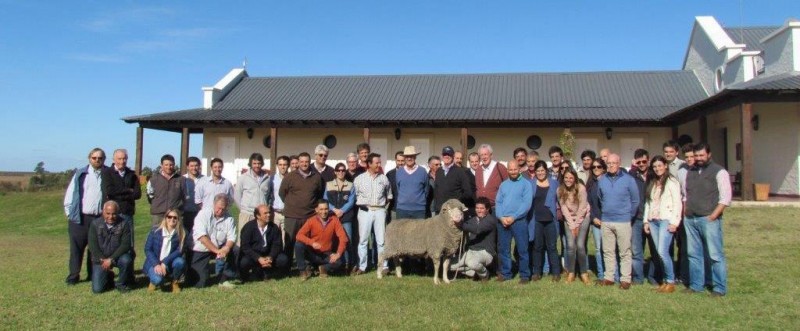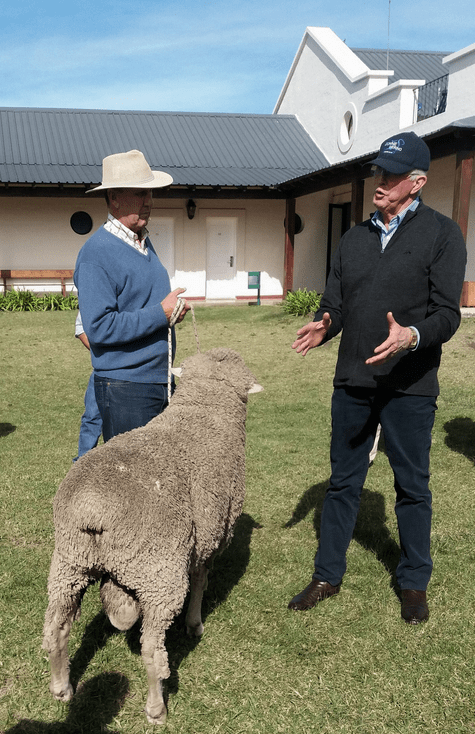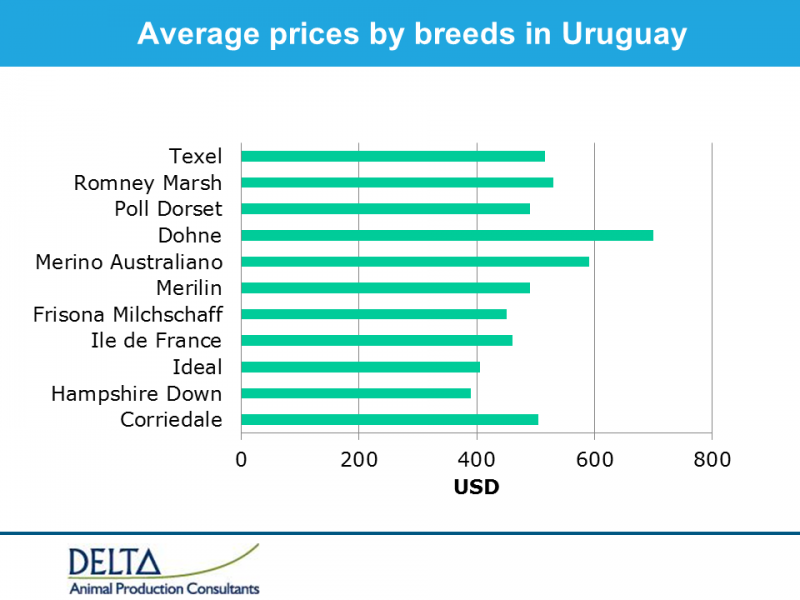Dohne substantially increasing in Uruguay
“The Dohne has established itself as a major Sheep breed originating in South Africa and over the last 19 years spreading to Australia, New Zealand, Uruguay, Chile, Argentina, Falkland Islands, Peru and Russia.”
Inaugural Uruguayan Workshop May 2017 presented by Allan Casey, ADBA Technical Advisor.
ROBERTO CARDELLINO Delta Consultants Uruguay
SINCE the introduction of the Dohne Merino Breed into Uruguay in 2002, as the first South American country in doing this, there has been a continuous and sustained development of the breed.
After 15 years, the number of ram breeding flocks has increased substantially. The present number of breeders associated to the Uruguayan Dohne Breeders Association (SCMD) are close to 30, with 8 ram breeding flocks selling more than 600 rams per year to other Dohne ram breeding flocks or to commercial Corriedale and Merino flocks throughout the country.
Main results obtained by the research organisations in the country, comparing the performance of pure Corriedale flocks with F1, F2 or F3 Dohnes x Corriedale crosses clearly have shown that there was a big reduction in fibre diameter (4.5 microns in the first generation), with a slight reduction in fleece wt, better wool colour as well as better lamb meat traits (better conformation, higher proportion of valuable lean cuts). Average annual rainfall can range from 1000mm to 1300mm throughout the four seasons. It is estimated that the proportion of animals in the national flock with some degree of Dohne genetics has reached a value close to 10%, which represents 700,000 animals approximately.
Since the beginning of the introduction of the breed in the country, the Association has been promoting stud breeders to perform objective performance, recording full pedigree and become involved in genetic evaluations.
The involvement of INIA (the National Research Institution) and also of SUL (the Uruguayan Wool Secretariat) in performing experimental and impartial evidence of the benefits of the Dohne in crosses with other breeds, in particular the Corriedale, was of outmost importance.
Despite a small reduction in fleece wt (10%) and a small reduction in staple length, there was a reduction of the diameter in 4 microns in one generation, whiter wool (reduction of 25% in y-z values), faster growing rates (10%) and better meat quality (bigger eye muscle area with less fat).
Initial clientele were mostly Corriedale breeders, but in the last years, it has been observed a very marked increase in the number of Merino breeders wanting to improve meat characteristics, without affecting their production of wool.
The last three years, average prices of Dohne rams in open sales were the highest of all the breeds.
Gabriel Capurro, president of the Uruguayan Dohne Breeders with ADBA Technical Advisor Allan Casey at the recent Uruguayan Dohne Breeders Workshop.
Comparison Dohne – Corriedale (Uruguay)
• Increases 9% weaning weight
• Increases the area of muscle
• Reduces the degree of carcass fat
• Increases carcass weight by 10%
• Reduces clean fleece weight on average 10-15%
• Reduces fibre diameter between 15 and 20%
• Reduces staple length 13-15%.
• Reduces the degree of wool yellowing: y – z (23 to 26%)
The results of crossing Dohne x Merino
• Animals with much better comformation
• Lambs show better growth rate and carcass yields of > 48%
• Animals show more hardiness and easycare
• Animals with less wrinkles and polled
• Better reproductive behaviour
• In crosses over medium Merino, reductions in diameter
• Small reduction in fleece weight
Comparison until weaning
• At birth: Dohne lambs are 400 grams heavier than Merinos.
• At marking (50 days): Dohnes 3.3kg heavier than Merinos.
• At weaning: Dohne lambs 4.8 kg heavier than Merinos.
• Type of birth: 10% more incidence of twinning in Dohne ewes.
“The Dohne breed will continue being a very important tool to increase market opportunities for sheep meat and wool in the South American countries.”
Average prices by breeds in Uruguay 2016.
Meat traits in Uruguay 2016.














 Facebook
Facebook YouTube
YouTube Instagram
Instagram